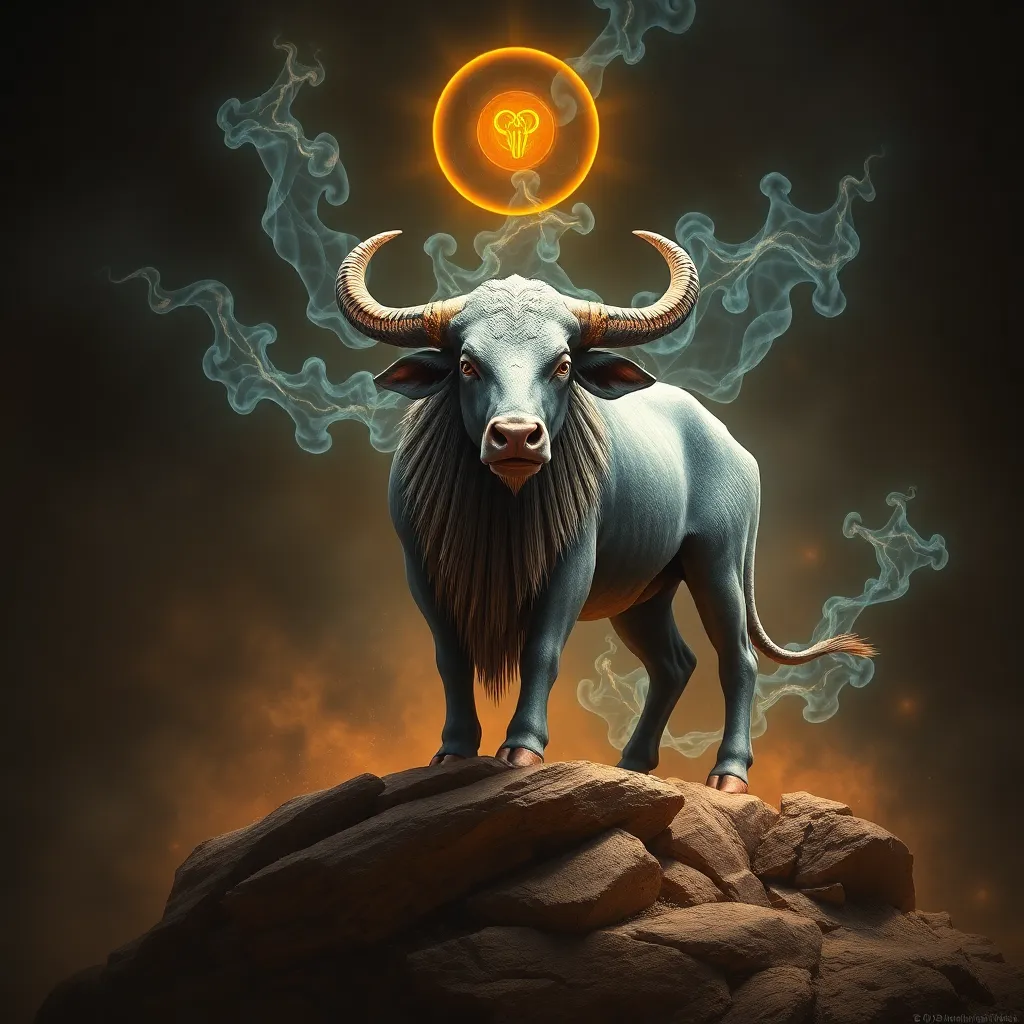The Apis Bull: Myths of Transformation and Divinity
I. Introduction
The Apis Bull, a significant figure in ancient Egyptian culture, embodies the duality of transformation and divinity. Revered as a sacred animal, the Apis Bull was not merely seen as a creature but as a living manifestation of the gods, particularly associated with the deity Ptah. The significance of the Apis Bull goes beyond mere worship; it represents the intricate relationship between the earthly and the divine, symbolizing fertility, strength, and rebirth.
II. Historical Context of the Apis Bull
The Apis Bull’s origins can be traced back to the early dynastic periods of ancient Egypt, where it was first depicted in art and inscriptions. The bull was typically characterized by its distinctive black color with white markings, which were believed to signify its divine nature.
- Origins: The Apis Bull was associated with the city of Memphis, the ancient capital of Egypt, where it was worshipped as a symbol of agricultural fertility and strength.
- Role in Society: The Apis Bull was revered in various religious ceremonies, becoming a central figure in the worship of Ptah, the creator god and god of craftsmen.
III. The Mythology Surrounding the Apis Bull
Numerous stories and legends envelop the Apis Bull, highlighting its importance in Egyptian mythology. One prominent myth involves the transformation of the bull into a divine being upon its death.
- Legends: It was believed that upon the Apis Bull’s death, it would be judged and, if deemed worthy, would ascend to the afterlife as Osiris, the god of the afterlife.
- Connection with Deities: The Apis Bull was often linked with other deities, such as Hathor, the goddess of love and motherhood, and Amun, symbolizing the creation and the hidden aspects of divinity.
IV. Symbolism of Transformation
The Apis Bull stands as a powerful symbol of transformation, particularly in the context of fertility and rebirth. Its life cycle is perceived as a representation of the agricultural seasons, where death leads to regeneration.
- Fertility: The bull was associated with the inundation of the Nile, which was critical for crops and agriculture, symbolizing the life-giving aspects of nature.
- Rituals: Veneration of the Apis Bull included elaborate rituals, such as the purification ceremonies and offerings made to honor its spirit.
V. The Apis Bull and the Afterlife
The beliefs surrounding the Apis Bull extended deeply into the concept of the afterlife in Egyptian mythology. The bull’s death was not considered an end but a transformation into a divine entity.
- Role in the Afterlife: The Apis Bull was believed to guide the souls of the deceased, helping them navigate the challenges of the afterlife.
- Resurrection: The concept of resurrection is closely tied to the Apis Bull, symbolizing the cyclical nature of life and death.
VI. Artistic Depictions of the Apis Bull
In ancient Egyptian art, the Apis Bull was depicted in various forms, often characterized by its physical features that emphasized its sacred status.
- Artistic Representations: Common depictions include the bull adorned with a sun disk between its horns, showcasing its divine connection.
- Symbolic Analysis: These artistic representations served not only as religious icons but also as a means to communicate the Apis Bull’s significance in cultural mythology.
VII. The Legacy of the Apis Bull in Modern Culture
The Apis Bull’s influence extends beyond ancient Egypt, impacting contemporary interpretations of Egyptian mythology and culture.
- Modern Interpretations: The Apis Bull has inspired various works of art, literature, and scholarly research, shedding light on ancient beliefs and practices.
- Popular Culture: Elements of the Apis Bull’s imagery can be found in films, books, and exhibitions, highlighting its enduring legacy in the collective consciousness.
VIII. Conclusion
In summary, the Apis Bull holds a significant place in the mythology of ancient Egypt, symbolizing transformation, fertility, and the divine connection between life and death. Its legacy continues to resonate in modern culture, offering insights into the beliefs and practices of an ancient civilization that revered this majestic creature. The Apis Bull stands as a testament to the rich tapestry of Egyptian mythology, reflecting the enduring impact of these ancient beliefs on our understanding of life, death, and the eternal cycle of existence.




